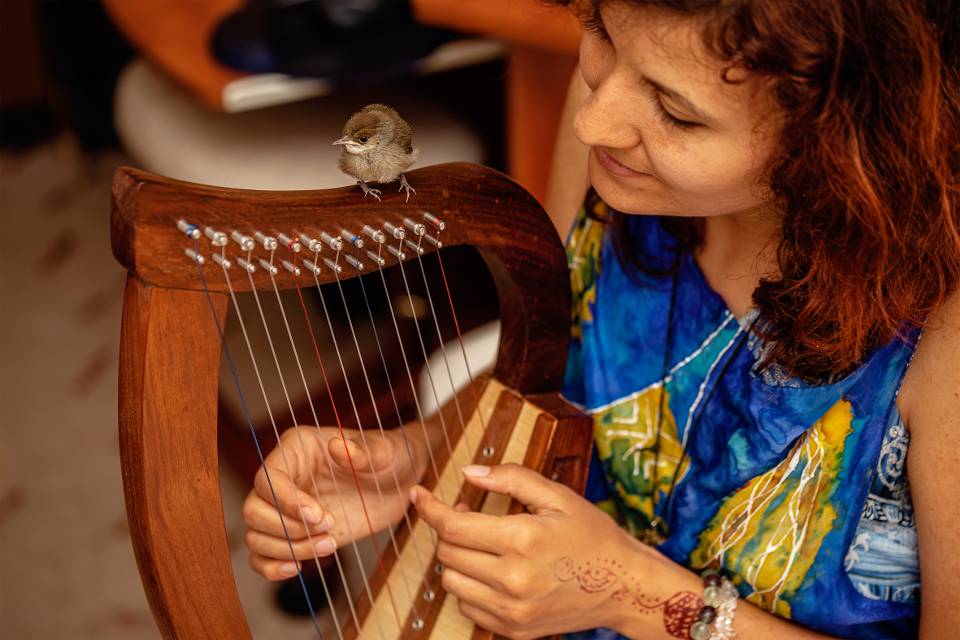The debate between the banjo and guitar is not strange, especially to those looking to learn a stringed musical instrument.

The banjo and the guitar are both stringed instruments with unique characteristics and playing styles. How do you decide which one to learn based on their difficulty level?
Contents
The Banjo vs the Guitar, Which Is Easier?
Let’s start with the banjo. The banjo typically has either four or five strings.
It is known for its distinctive twangy and percussive sound, often associated with genres like bluegrass, folk, and traditional Appalachian music.
The most common type of banjo is the 5-string banjo, which has a shorter fifth string that is played with a thumb pick.
The banjo is usually played with fingerpicking techniques or using picks, and it often emphasizes playing melodies and single-note lines.
Banjos have a resonator or an open-back design, which affects their sound projection and tone.
The guitar on the other hand, is an instrument with six strings, typically played with the fingers or a pick.
The guitar is known for its versatility, capable of playing chords, melodies, and intricate fingerpicking patterns.
It is commonly used in genres such as rock, pop, jazz, blues, country, and many more.
Guitars come in different shapes and sizes, including classical, acoustic steel-string, electric, and bass guitars.
They can be acoustic (with a hollow body) or electric (requiring amplification).
They have a wide range of playing styles, including strumming, fingerpicking, bending notes, and playing solos.
In terms of difficulty, the banjo is often considered slightly easier to learn than the guitar. This is due to a bunch of factors that’ll be considered below.
Why Is the Banjo Considered Easier than the Guitar?
Both the banjo and guitar are versatile instruments. However, it is commonly perpetuated that the banjo is easier to learn than the guitar for several reasons:
They Have Simpler Chord Shapes
The banjo typically uses four or five strings, compared to the guitar’s six strings. This can make it easier to form chord shapes and play basic chords on the banjo.
Guitarists frequently employ barre chords. Here, a finger is used to press down multiple strings across a single fret.
Barre chords allow for greater versatility and can be moved up and down the fretboard to play chords in different keys.
While barre chords can be challenging for beginners, they provide access to a wide range of chord shapes.
There Are Fewer Strings to Manage

With fewer strings, the banjo requires less finger dexterity and coordination, especially for beginners. This can make it easier to pick and strum the strings accurately.
A standard guitar typically has six strings. Managing six strings can be more challenging, especially when it comes to fingerpicking or playing complex chord shapes.
The additional strings on the guitar can require more dexterity and coordination.
Playing Style
The banjo is often associated with specific musical genres like bluegrass and folk. In these genres, it tends to have a more limited range of techniques compared to the guitar.
This narrower focus can make it easier to get started and achieve a basic level of proficiency. Banjo playing often emphasizes playing melodies and single-note lines.
Whereas the guitar can involve more complex chord progressions and intricate fingerpicking patterns.
This can make it easier for beginners to focus on playing simple melodies on the banjo.
Hence, in the first place, some people find the banjo’s playing style more straightforward to grasp.
Similar Tuning
The banjo commonly uses open tunings, such as open G tuning (G-D-G-B-D) or Open D (D-A-D-F#-A).
This means that strumming or picking all the open strings will produce a pleasing sound without fretting any notes.
Open tunings can make it easier to play certain chord progressions and create a fuller sound. In contrast, the guitar is typically tuned to standard tuning (E-A-D-G-B-E).
This may require more complex fingerings for chords. The standard tuning for a 5-string banjo, known as open G tuning, shares some similarities with the guitar’s open G tuning.
If you’re familiar with guitar chords in open G tuning, you can easily transfer that knowledge to the banjo.
Strumming Technique
The banjo often utilizes a picking or clawhammer technique for strumming.
This can be easier to grasp for beginners. Compared to the complex strumming patterns and fingerstyle techniques commonly used on the guitar.
The banjo’s picking techniques tend to have a more straightforward and rhythmic approach.
Repetitive Patterns
Some styles of banjo playing, like frailing or clawhammer, often involve repetitive patterns. These patterns are relatively easy to learn and execute.
They can provide a solid foundation for beginners and help them build muscle memory and rhythm skills.
Size and Scale Length
Depending on the type and number of strings, banjo all have slightly different-sized necks, in terms of length and width.
Particularly the shorter-scale 5-string banjos can have a smaller body and shorter neck compared to guitars.
This can make it more comfortable for players with smaller hands or those who prefer a smaller instrument.
Genetics also play a factor in whether the banjo is easier for you to play. Certain physical attributes may have some impact on the ability to play an instrument.
These include hand size or dexterity although these factors are not exclusive to one instrument.
Style of Music
If you are primarily interested in playing styles like bluegrass or folk, the banjo may be easier to learn. This is because it is closely associated with these genres.
The guitar is incredibly versatile and can be found in almost every genre of music. It has a broader tonal range and can be played in various styles.

Of course, both the banjo and the guitar are versatile instruments.
However, the common belief is that the guitar tends to have broader versatility across different musical genres and playing styles.
This is not completely true in recent times. The banjo is now used by performers in numerous genres of music.
From rock, jazz, blues, classical, country, world music, and even hip-hop. There’s no limit to where you can play the banjo today.
Is the Banjo Easier than the Guitar? The Verdict
The difficulty of learning an instrument varies from person to person and is largely subjective. Each instrument has its own learning curves and plateau points.
Although, it can be agreed that the 5-string banjo could be the easiest stringed instrument for a beginner.
Compared to the guitar, it is a far easier instrument to start learning with it.
Notably, learning any musical instrument requires time, practice, and dedication. Yes, the banjo may have some advantages for beginners.
However, both instruments have their challenges and complexities that need to be mastered to become proficient players.
Ultimately, the ease of learning depends on your learning style and goals. The final decision comes down to which instrument makes you the happiest.
Which do you enjoy playing the most? You must also be willing to invest a substantial amount of effort into practice and taking lessons.
Whichever one you choose, you can easily transfer the skills you learn from one to the other. You can transfer the skills you learn on the guitar to the banjo and vice versa.






